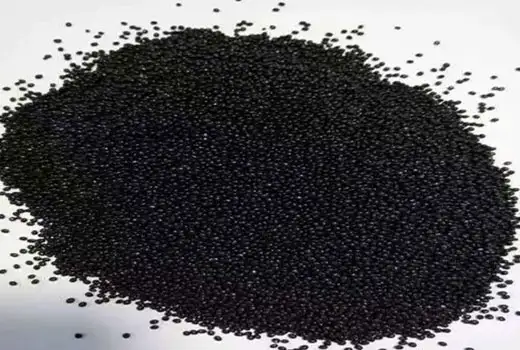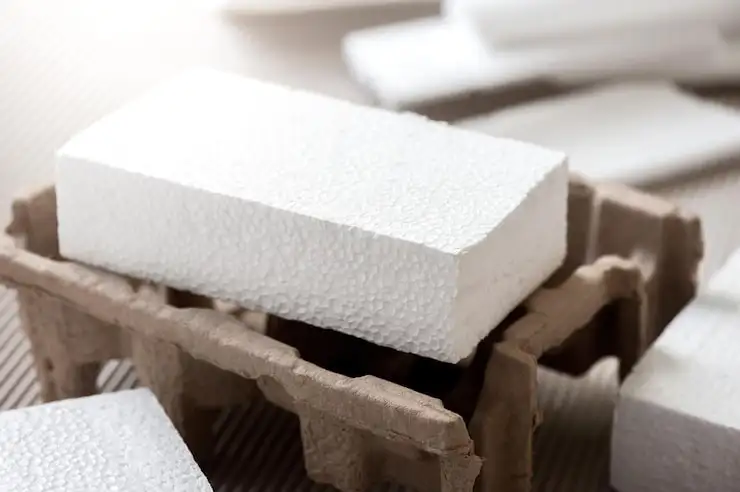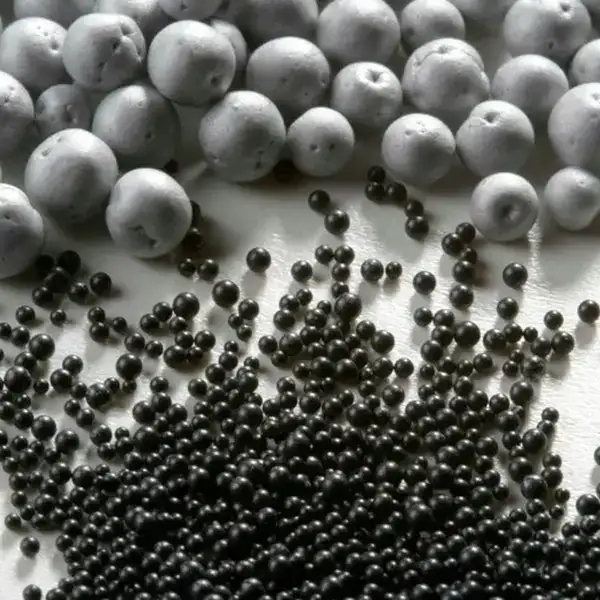The blending of expanded polystyrene (EPS) with concrete has become a game-changer in today’s building world. By using the light and heat-blocking traits of EPS foam, builders and designers are pushing the limits of what old-school concrete can do. This piece dives into how EPS works in concrete projects, its upsides, downsides, and how firms like HUASHENG are crafting eco-friendly ideas for tomorrow.

Overview of Expanded Polystyrene (EPS) and Its Properties
Expanded polystyrene is a handy material that’s caught on in many fields thanks to its special mix of strength and warmth-blocking features.
What Is Expanded Polystyrene?
EPS is a tough, sealed-bubble foam made mostly of air and polystyrene. It’s created by puffing up tiny polystyrene bits with heat and a special gas, turning them into a feather-light but sturdy product. Lanzhou Huasheng New Materials Co., Ltd. is a cutting-edge company focused on designing, making, and selling expandable polystyrene (EPS) foam.
Key Physical and Thermal Characteristics of EPS Foam
EPS foam is great at keeping heat in or out because it doesn’t let warmth pass through easily and holds a lot of air. It’s also good at soaking up bumps, resisting dampness, staying steady in size, and being super light. These traits make it perfect for building, packing, and other uses.
Common Applications Across Industries
When it comes to keeping buildings cozy, HUASHENG’s EPS foam stands out. Their items do an amazing job at cutting down on energy use in homes and offices. For packing and shipping needs, the company provides light but tough EPS foam options. On top of that, EPS shows up in fancy decor, cold storage shipping, quake-proof packing, and even creative art pieces.
Integration of EPS into Concrete Mixtures
Mixing EPS into concrete batches offers a fresh way to boost certain qualities while making the mix much lighter.
Methods for Incorporating EPS Beads into Concrete
There are a few tricks to add EPS into concrete, depending on what you need it for.
Partial Replacement of Aggregates with EPS
One popular way is to swap out some of the usual stuff, like sand or rocks, with EPS bits. This cuts down the weight of the concrete a lot. Plus, it makes the mix better at blocking heat.
Use in Precast and In-Situ Concrete Applications
Concrete with EPS can be used in ready-made panels built off-site or poured right where it’s needed on a job site. You’ll see it in things like walls that don’t hold up weight, floor bases, roof tops, and room dividers.
Compatibility with Cementitious Materials
Even though EPS doesn’t react much chemically, it sticks nicely in cement mixes if you get the recipe right. Special additives or coatings can help the beads cling better to the cement goo.
Impact on Mechanical Properties of Concrete
EPS brings lots of perks, but it does change how strong regular concrete is.
Compressive Strength Considerations
Swapping heavy bits for light EPS naturally lowers how much pressure the concrete can take. But that’s okay for many projects that don’t need to hold up heavy loads. In those cases, saving weight or keeping heat out matters more than raw strength.
Flexural and Tensile Behavior Changes
The bending strength drops a bit since the bits don’t lock together as tightly. Adding stuff like fibers can help make up for this loss.
Influence on Density and Workability
Concrete with EPS gets way lighter, often by 25% to 50% compared to normal mixes. This makes it easier to move around on-site. The round shape of the beads also makes mixing smoother. Still, you might need to tweak the water-to-cement mix to stop the bits from separating.
Thermal Insulation Benefits of EPS-Modified Concrete
One big reason to mix EPS into concrete is how well it blocks heat.
Heat Transfer Reduction in Building Envelopes
EPS creates a solid shield against heat flow. This helps keep inside spaces comfy all year long. It cuts down the need for heaters or air conditioners. That’s why EPS-concrete is awesome for energy-saving walls or roofs.
Role in Energy Efficiency for Residential and Commercial Structures
Buildings don’t just save energy with this stuff. They also help cut down on harmful gases released into the air. These gains match up with worldwide eco-friendly building rules like LEED standards.
Acoustic Performance Enhancements
Besides keeping heat in check, adding expanded polystyrene to concrete makes it better at soaking up noise.
Sound Absorption Capabilities of EPS Concrete
The airy gaps from scattered EPS beads mess up sound waves passing through walls or floors. This cuts down on echoes and outside racket pretty well.
Applications in Noise-Sensitive Environments
Concrete with EPS is super helpful in places like schools, hospitals, or homes near busy roads or airports. Those spots really need quiet for comfort.
Durability and Moisture Resistance Factors
How long a building material lasts is a huge deal when looking at options like EPS-mixed concrete.
Water Absorption Behavior of EPS-Concrete Mixes
EPS itself doesn’t soak up much water thanks to its sealed bubbles. When mixed right into concrete with the proper extras or sealers, it helps keep the whole mix from getting too wet without losing strength.

Long-Term Performance Under Environmental Stressors
HUASHENG blends green thinking with fresh ideas. They offer smart recycling, custom looks, and a worldwide setup for reusing materials. Their goods hold up nicely against freezing and thawing or chemical wear over time, as long as they’re used within safe limits.
Environmental and Economic Considerations
Using expanded polystyrene doesn’t just improve how things work. It also helps meet green targets.
Lightweight Construction Advantages and Cost Savings
Lighter builds mean less strain on foundations, which saves on supplies and cash. It also makes hauling stuff around easier. HUASHENG has a big lineup of EPS foam goods. Pick out the perfect high-quality EPS panel or foam sheet for your needs right now!
Recyclability and Sustainability Aspects of EPS Use in Concrete
The eco-impact of 1 ton of recycled expandable polystyrene base (R-EPS) is just 719.14 kilograms of CO₂ equivalent. That shows reused versions are way better for the planet than brand-new ones. Modern EPS factories recycle over 95% of factory waste, which backs up the idea of reusing in building work.
Challenges and Limitations in Using EPS in Concrete
Even with its cool perks, mixing expanded polystyrene into cement mixes comes with some hurdles.
Reduced Structural Load-Bearing Capacity Risks
Since using more light EPS bits lowers the strength to hold weight, careful planning is a must. This applies especially to anything beyond simple walls or parts that don’t carry loads.
Handling, Mixing, and Segregation Issues During Placement
EPS is so light compared to cement or regular rocks that it can split apart during mixing. To avoid this, steps like pre-soaking or adding thickeners need to be taken with care while preparing batches.
Innovations in EPS-Based Concrete Products
Ongoing studies and experiments keep bringing out better mixes that use expanded polystyrene as a key part.
Development of Structural Lightweight Concrete Panels
Efforts like the GreenBuild Eco-city Project show real results. Using B1 flame-retardant grade bits boosted energy savings by 14%. It also cut project time by 18 days compared to older setups like rock wool boards. This proves the power of new ideas from HUASHENG’s research teams.
Advances in Fire-Resistant EPS Formulations for Safer Construction
HUASHENG’s top products include various EPS types like regular and flame-retardant. These fire-safe options meet tough safety rules while keeping the light weight that’s key for pre-made builds or modular homes under strict fire laws around the world.
HUASHENG: Trusted Supplier of High-Quality EPS Solutions
Standing tall among leaders in this field is HUASHENG, a trailblazer based in Northwest China’s industrial zone, dedicated to smart, green production.
Company Profile and Industry Reputation
With a goal to “ease the load on our planet,” HUASHENG is sparking a worldwide shift in materials, starting with a tiny piece of polystyrene.
Common Grade EPS Products for General Applications
These fit well in many areas like packing buffers or decorative shapes due to their solid balance of cost and usefulness.
Flame Retardant Grade for Enhanced Fire Safety
Perfect for places needing strict fire rules. They work great with pre-built wall pieces.
Graphite Grade for Improved Insulation Performance
These give better heat-blocking power, making them a top pick for buildings aiming for zero energy use.

Environmental Protection Grade Promoting Green Building Standards
All of HUASHENG’s eco-friendly grades help with green building awards by cutting down on hidden carbon impact.
Carbon Black Grade with UV Resistance Properties
Great for outdoor uses that need to last under the sun for a long time.
Customized REPS Tailored to Project Specifications
From art bases shown at global fairs to EcoPack reusable packing that slashed costs by 28%, tailoring solutions is at the heart of HUASHENG’s creative plans.
Conclusion: Evaluating the Potential of EPS in Modern Construction Practices
Expanded polystyrene opens up a thrilling road to lighter buildings without losing key traits like heat control or noise comfort. With smart use backed by makers like HUASHENG, who mix top-notch research with eco-values, the outlook is bright for wider use in all kinds of building projects.
FAQs:
Q1: Is concrete made with expanded polystyrene as tough as regular concrete?
A: It’s not as strong for holding weight since it has less pressure power than mixes with normal rocks. But it works fine for walls that don’t carry loads or layers meant to block heat where strength isn’t the main worry.
Q2: Can EPS-concrete be used in outside load-bearing parts?
A: Yes, if planned right with extras like added support or mixed panel designs. It works well where cutting weight or boosting heat control matters more than just holding up stuff, like on building fronts.
Q3: Does using flame retardant grade EPS make buildings safer from fire?
A: For sure. B1 flame-retardant grade bits meet tough fire safety rules. They’re a solid choice for outside wall heat layers that need extra safety under global laws.






